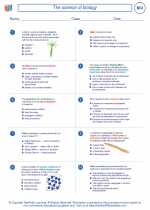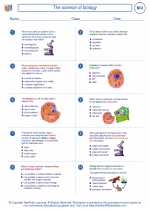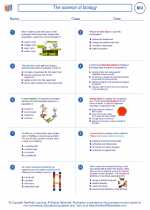Ecological Interactions
Ecological interactions refer to the relationships between different species within an ecosystem. These interactions can be categorized into several types, including competition, predation, mutualism, commensalism, and parasitism. Understanding these interactions is crucial for comprehending the dynamics of ecosystems and the distribution of species within them.
Competition
Competition occurs when two or more species compete for the same limited resources, such as food, water, or shelter. This can lead to a struggle for survival and can affect the population dynamics of the competing species. In some cases, competition can result in the displacement of one species by another due to their inability to coexist in the same ecological niche.
Predation
Predation is the act of one species (predator) hunting, killing, and consuming another species (prey). This interaction has a significant impact on the population sizes of both the predator and prey species. It also plays a crucial role in shaping the evolutionary adaptations of both parties, as predators develop hunting strategies while prey evolve defense mechanisms.
Mutualism
Mutualism is a type of symbiotic relationship in which both species involved benefit from the interaction. This can involve a variety of interactions, such as pollination, seed dispersal, or mutual defense. Examples of mutualistic relationships include the partnership between flowering plants and pollinating insects, and the relationship between nitrogen-fixing bacteria and leguminous plants.
Commensalism
Commensalism is a relationship in which one species benefits from the interaction while the other is neither significantly helped nor harmed. An example of commensalism is the relationship between barnacles and whales, where barnacles attach themselves to the whale's skin and benefit from the transportation and access to food particles in the water, while the whale is unaffected.
Parasitism
Parasitism involves one species (parasite) living in or on another species (host) and deriving nutrients at the host's expense. This relationship often harms the host and can lead to various degrees of damage or disease. Common examples of parasitism include ticks feeding on mammals, and tapeworms residing in the intestines of vertebrates.
Study Guide
- Define ecological interactions and explain their significance in ecosystems.
- Discuss the impact of competition on the distribution and abundance of species.
- Describe the predator-prey relationship and its influence on population dynamics.
- Provide examples of mutualistic interactions and their ecological importance.
- Explain the concept of commensalism and provide real-world examples.
- Explore the effects of parasitism on host populations and ecosystems.
- Compare and contrast the different types of ecological interactions.
- Discuss the evolutionary implications of ecological interactions on species adaptations.
- Analyze the role of ecological interactions in maintaining ecosystem stability.
- Propose conservation strategies based on an understanding of ecological interactions.
Understanding ecological interactions is fundamental to comprehending the interconnectedness of species within ecosystems. By studying these interactions, we gain insights into the delicate balance that shapes the natural world and the strategies employed by organisms to survive and thrive in their environments.
.◂Biology Worksheets and Study Guides High School. The science of biology

 Worksheet/Answer key
Worksheet/Answer key
 Worksheet/Answer key
Worksheet/Answer key
